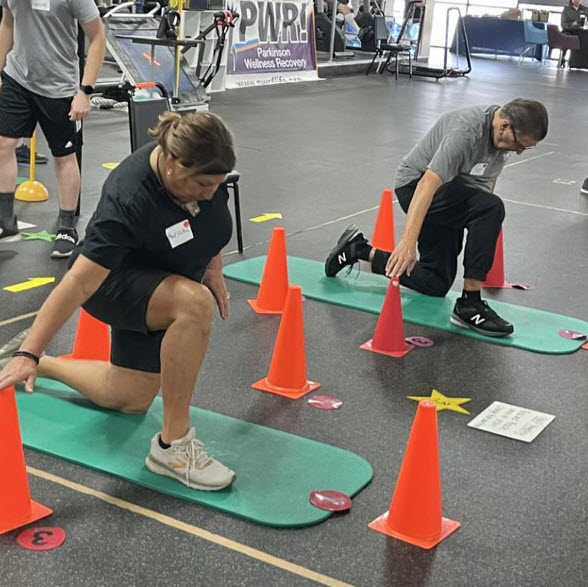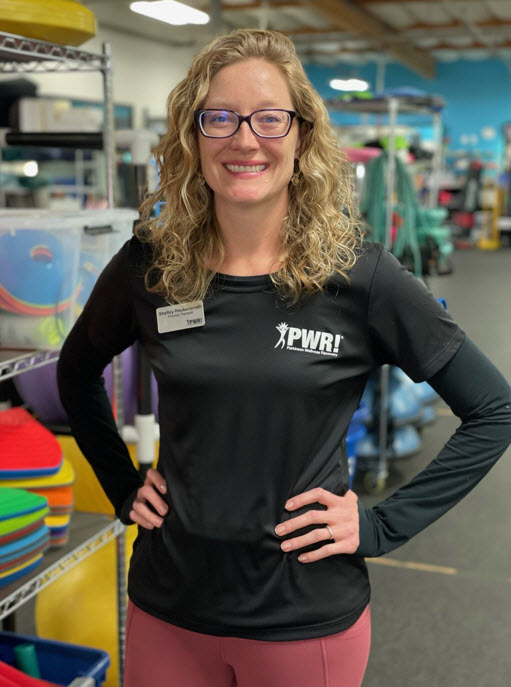Falling with Parkinsons - Rising from the Floor
Previously we considered how much therapy time is dedicated to actually be on the floor. This article circles back towards rising from the floor, because ultimately what goes down must come back up and goal-directed interventions are important. To help goal writing and therapeutic rationale, here is an interesting article related to the methods our patients use to rise from the floor:
Tools such as this one can be helpful in bridging the gap as it can objectify rising from the floor while indicating floor-based interventions to improve efficacy. The investigators used the Timed Supine to Stand Test to observe the participants’ preferred method as well as investigating correlations to other physical performance tests. They observed how many participants self-selected quadruped versus reverse bearwalk plantigrade method to rise from the floor, additionally observing how many chose a log roll method to transition from supine and how many used a chair for the transfer.
A link to the tool is available here https://www.sralab.org/rehabilitation-measures/supine-stand-test through the Shirley Ryan Ability Lab Rehab Measures database. While the normative data is based on a small sample size and the test has some limitations as described in the database, floor mobility and floor transfer goals can use this as an excellent starting point. Not only can you objectively time the transfer and indicate independence level, but you can also note the method and observe for areas of movement impairment for treatment planning. Analytical movement professionals do not just ask if the person can get on and off the floor safely. Additional poignant questions include what method is used and what can be optimized to improve efficacy. Specific to Parkinson’s Disease, we principally dissect movements for axial mobility, symmetry, weight shifting, coordination, movement speed, and amplitude.

The paper reports 70% of the participants used quadruped method and 25% used bearwalk plantigrade method to rise from the floor. Simply put, a lot of body position changes occur between supine and either of these positions. The motor complexity of individual parts and the whole task reveals treatment ideas to address the range from new onset highly functional individual or a someone with more advanced Hoehn and Yahr Scale presentation.
Let us start with a new onset, high functioning patient. The Timed Supine to Stand Test result might be quick and safe. Analytically however, the complex task may reveal asymmetry, axial rigidity, impaired sequencing, or limited weight shift which might be more apparent than observing standing based tests. This is what we want to capture for the patient’s self-awareness and intention. For treatment, consider floor based PWR!Moves to use tactile feedback for self-awareness. High level movements like crab or bear crawling can help coordination and strength during transitions and add rotational components for axial mobility. Knee driver movements such as mountain climbers or standing knee drivers can help with stability transitioning to kneeling. How about the ultimate core challenge of rolling with arms overhead for head/upper torso versus pelvic recruitment in rolling?
Next let us consider a patient who is safe to get on and off the floor perhaps with or without a chair, but the timed test is slow, and observation shows bradykinesia, sequencing errors, axial stiffness, and reduced movement amplitude. Of note, in the study 45% of the participants used a chair to rise from the floor. Using elements of the preferred supine to stand method, basic PWR!Moves on the floor can target your analyzed problem areas. Consider improving segmental, powerful rolling starting with head/arms with PWR!Twist or emphasize the pelvis using PWR!Rock. Improve the transition to sidesit with upper body endurance and trunk lateral flexion in side sitting, perhaps add hand boosts with ribbons or scarves. PWR!Step in quadruped or modified quadruped targets the transition. Add complexity with crawling over obstacles or part practice the transitions. External targets and gamifying the activity can increase engagement.
Finally let us reflect on clients needing assistance to get on and off the floor. This group may not be appropriate for the formal Timed Supine to Stand Test, but high fall risk tells us floor transfers are relevant. Treatment consists of part practice as with the other groups but might start on wide mat tables or beds for safety. Quadruped can be achieved on a bed by crawling onto it, and if the arms or legs fatigue consider cushions, swiss balls, or bolsters to support the body weight. Often these patients progress floor transfers from the top down, first practicing supported stand to kneel then kneel to sidesit (on a raised surface if needed to work on sidesit back to kneel in reduced range of motion).
Whether you use a standardized test tool such as the Timed Supine to Stand test or use other assessment tactics, keep on finding ways to use the floor as a treatment modality for fall recovery AND as a tool to help you analyze and then optimize movements! As always, thanks for reading.
Read about spending time on the floor in part 1 of Parkinson's and Falls
Share PWR! with others
Shelley Hockensmith, PT, MPT About the Author
Physical Therapist
Board Certified Neurologic Clinical Specialist
Shelley Hockensmith is a physical therapist. She has been a PWR! supporter since its conception, helping as a consulting therapist for many years and then joining the therapy team in 2019.
Shelley has been a physical therapist for 20 years with experience primarily in outpatient neurological clinics. She has been a Board Certified Neurologic Specialist since 2007 and has specialized training in movement disorders as well as balance and vestibular disorders. In addition to providing individualized therapy, she also serves as faculty in PWR! professional training. Shelley has been a professional volunteer for several adaptive sports organizations locally and internationally.
A southern Indiana native, Shelley graduated from the University of Evansville in 2003 and moved to Tucson in 2005. She enjoys working in her desert gardens and is an avid exerciser which helps her keep up with her two very active boys.

